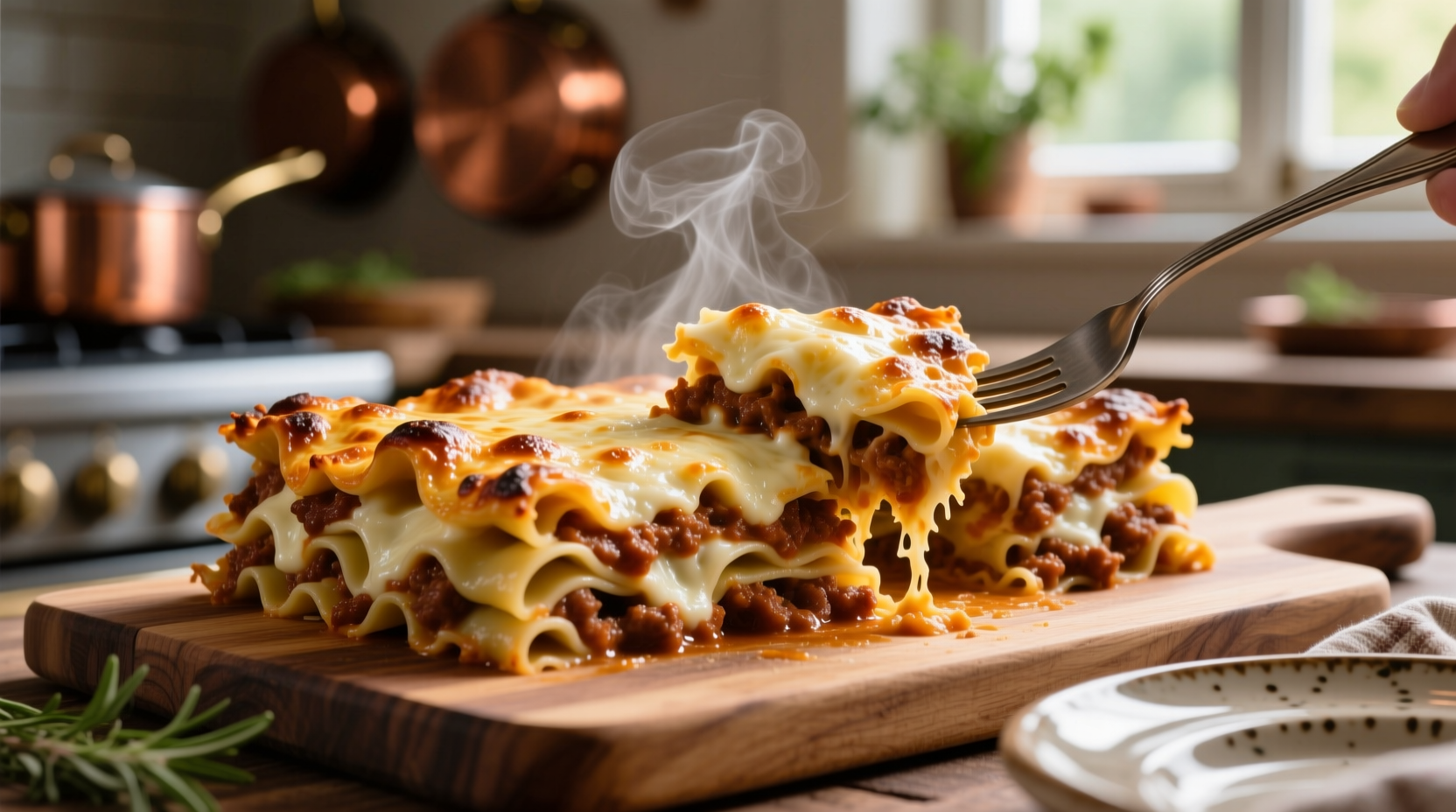The ideal oven temperature for baking traditional lasagna is 375°F (190°C) for 45-60 minutes. For meat-based lasagnas, ensure the internal temperature reaches 165°F (74°C) as recommended by USDA food safety guidelines to eliminate harmful bacteria while maintaining optimal texture and flavor.
When you're standing in your kitchen with lasagna noodles in hand, knowing the precise baking temperature isn't just helpful—it's essential for transforming your layered masterpiece from potentially soggy or dry disappointment into a perfectly cooked, restaurant-quality meal. Getting the temperature right affects everything from pasta texture to cheese browning and sauce integration.
The Science Behind Perfect Lasagna Temperature
Lasagna's layered structure creates unique thermal challenges. Unlike single-layer dishes, heat must penetrate through multiple components: pasta sheets, sauce, cheese, and often meat. Food scientist Dr. Shirley Corriher explains that 375°F (190°C) represents the sweet spot where:
- Moisture evaporates at optimal rate without drying out ingredients
- Cheese melts and browns without burning
- Pasta fully cooks without becoming mushy
- Flavors meld together through the Maillard reaction
Lower temperatures (under 350°F/175°C) risk undercooked pasta and watery texture, while higher temperatures (over 400°F/205°C) cause rapid moisture loss and potential scorching of cheese and edges.

Temperature Guidelines for Different Lasagna Types
Not all lasagnas bake at the same temperature. Your specific recipe components determine necessary adjustments:
| Lasagna Type | Recommended Temperature | Baking Time | Internal Temp Target |
|---|---|---|---|
| Traditional Meat Lasagna | 375°F (190°C) | 50-60 minutes | 165°F (74°C) |
| Vegetable Lasagna | 350°F (175°C) | 45-55 minutes | N/A |
| No-Boil Noodle Lasagna | 375°F (190°C) | 55-65 minutes | 165°F (74°C) if meat |
| Frozen/Prepared Lasagna | 350°F (175°C) | 75-90 minutes | 165°F (74°C) |
When to Adjust Your Oven Temperature
Certain conditions require temperature modifications for perfect results:
High-Altitude Baking
At elevations above 3,000 feet, increase temperature by 15-25°F (8-14°C) as recommended by the USDA's Cooking Safe guidelines. Water boils at lower temperatures at altitude, slowing the cooking process.
Convection Oven Considerations
When using convection (fan) ovens, reduce temperature by 25°F (14°C) while maintaining the same baking time. The circulating air improves heat distribution but can cause over-browning at standard temperatures.
Meat Content Adjustments
Lasagnas containing raw meat (like sausage or ground beef) require strict adherence to USDA food safety standards. The Food Safety and Inspection Service confirms that 165°F (74°C) internal temperature is necessary to eliminate pathogens like E. coli and salmonella.
Avoiding Common Temperature Mistakes
Even experienced cooks make these temperature-related errors:
- Opening the oven too frequently: Each peek drops the temperature by 25-50°F (14-28°C), extending cooking time and potentially causing uneven results
- Not preheating properly: Always allow 15-20 minutes for your oven to reach full temperature before baking
- Ignoring oven hot spots: Rotate your dish halfway through baking for even cooking
- Guessing doneness: Use an instant-read thermometer to verify internal temperature, especially with meat lasagnas
Professional Kitchen Secrets
From my years working in professional kitchens, I've learned these temperature management techniques that guarantee perfect lasagna every time:
- The Resting Period: Allow lasagna to rest for 15-20 minutes after baking. Temperature continues to rise 5-10°F (3-6°C) during this time (carryover cooking), and the layers set for cleaner slicing
- Aluminum Foil Technique: Cover loosely with foil for the first 30 minutes to prevent premature browning, then remove for the final bake to achieve that perfect golden crust
- Thermometer Placement: Insert your thermometer into the center of the dish, avoiding direct contact with cheese or meat chunks for an accurate reading of the pasta and sauce temperature
Troubleshooting Temperature Issues
Encountering problems? Here's how to fix common temperature-related issues:
- Soggy bottom layers: Increase temperature by 25°F (14°C) for the final 15 minutes with the dish positioned lower in the oven
- Burnt cheese top: Reduce temperature by 25°F (14°C) and cover with foil for remaining baking time
- Undercooked pasta: Cover tightly with foil and return to oven for 10-15 minutes at original temperature
- Dry texture: Next time, reduce temperature by 25°F (14°C) and extend baking time by 10-15 minutes











 浙公网安备
33010002000092号
浙公网安备
33010002000092号 浙B2-20120091-4
浙B2-20120091-4